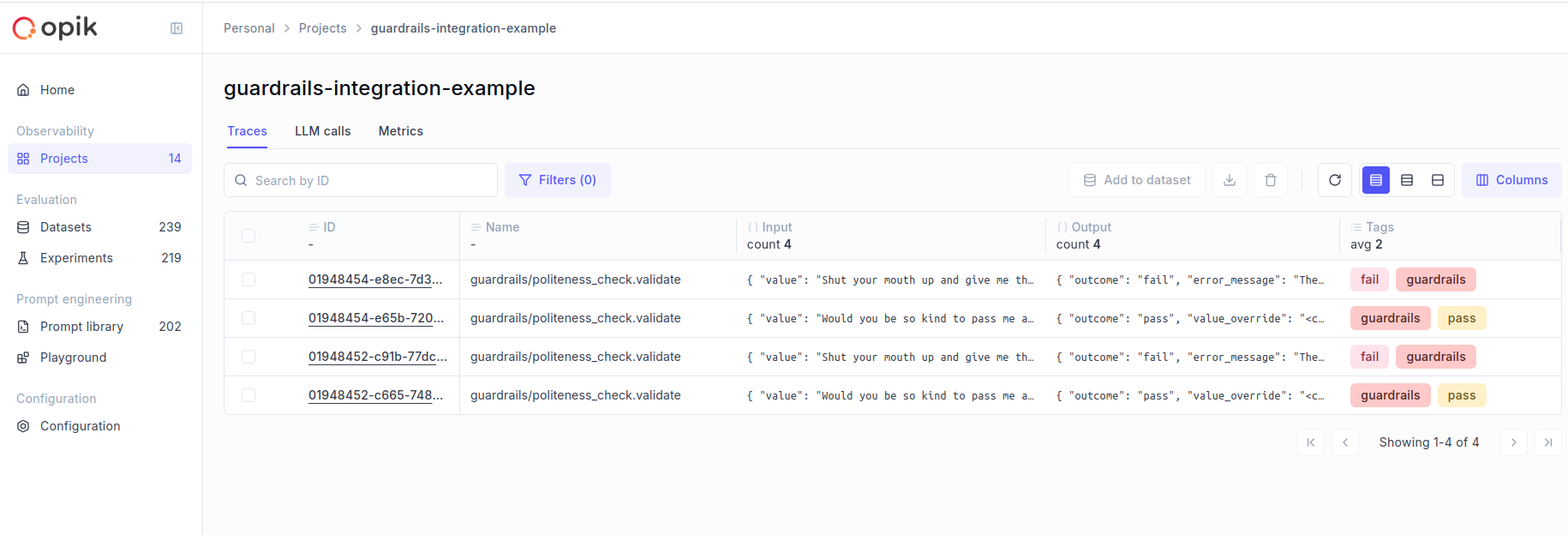Validation Tracking for Guardrails AI with Opik
Guardrails AI is a framework for validating the inputs and outputs
For this guide we will use a simple example that logs guardrails validation steps as traces to Opik, providing them with the validation result tags.
Account Setup
Comet provides a hosted version of the Opik platform, simply create an account and grab your API Key.
You can also run the Opik platform locally, see the installation guide for more information.
Getting Started
Installation
First, ensure you have both opik and guardrails-ai installed:
Configuring Opik
Configure the Opik Python SDK for your deployment type. See the Python SDK Configuration guide for detailed instructions on:
- CLI configuration:
opik configure - Code configuration:
opik.configure() - Self-hosted vs Cloud vs Enterprise setup
- Configuration files and environment variables
Configuring Guardrails AI
In order to use Guardrails AI, you will need to configure the OpenAI API Key. If you are using any other providers, you can replace this with the required API key. You can find or create your OpenAI API Key in this page.
You can set it as an environment variable:
Or set it programmatically:
We will also need to install the guardrails check for politeness from the Guardrails Hub:
Logging validation traces
In order to log traces to Opik, you will need to call the track the Guard object with track_guardrails function.
Every validation will now be logged to Opik as a trace
The trace will now be viewable in the Opik platform:


